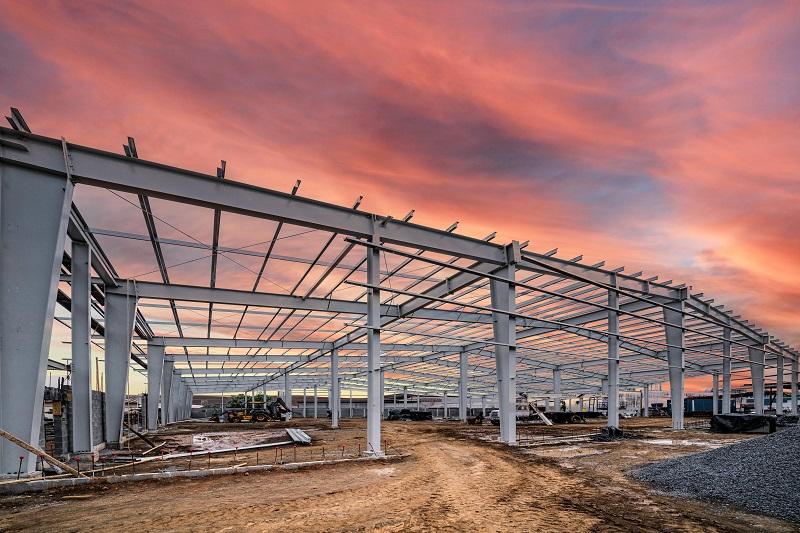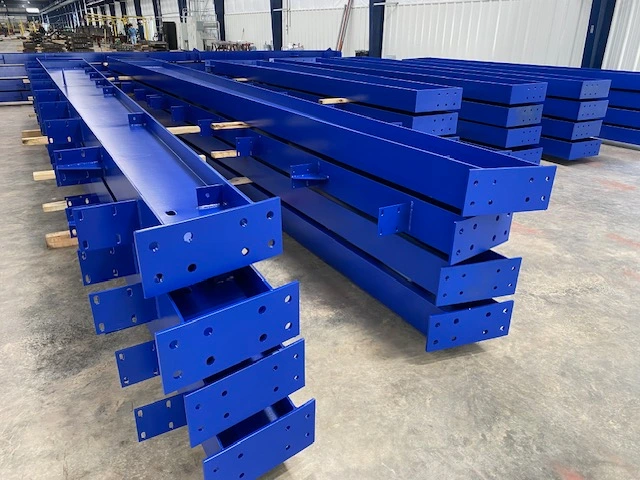Steel Buildings. When embarking on a steel construction project, the quality of the steel used is an important factor that can greatly impact the project’s long-term success. Selecting the wrong grade or wrong type of steel can lead to structural issues, increased maintenance costs, and even safety hazards. Nobody wants that!
In this guide, we’ll explore the factors you must consider when choosing the right steel for your next steel building construction project.

Understanding Steel Grades and Standards
The foundation of steel quality lies in its grade & adherence to industry standards. Different steel grades possess varying properties, making them suitable for specific applications.
ASTM Standards:
The American Society for Testing and Materials (ASTM) establishes standards that ensure consistent quality and performance in steel products. Adherence to ASTM standards is a crucial indicator of a reliable steel supplier.
Steel Grades:
Common steel grades include A36, A500, A992, and many others. Each grade has distinct yield strength and tensile strength characteristics, making them suitable for different load-bearing requirements. For instance, A36 is a versatile grade often used in structural components, while A500 is known for its high yield strength, making it ideal for applications requiring exceptional load-bearing capacity.
The Importance of Steel Thickness & Weight in Steel Buildings
The thickness and weight of steel are equally important considerations.
Thickness:
The appropriate steel thickness depends on the specific structural requirements of the project. Thicker steel can provide greater strength and durability, but it also increases weight and cost. Factors such as the building’s size, intended use, and load-bearing capacity will influence the optimal thickness.
Weight:
Steel weight is a significant factor to consider, especially in transportation and construction logistics. Heavier steel can increase transportation costs and require specialized equipment for handling. However, it’s essential to balance weight with structural integrity.
The Role of Steel Coatings and Finishes
Protect your steel investment with appropriate coatings and finishes.
Galvanization:
This process involves applying a zinc coating to the steel, providing excellent corrosion resistance. Galvanized steel is commonly used in outdoor structures, such as bridges, fences, and industrial equipment, where exposure to the elements is a concern.
Other Coatings:
Besides galvanization, other coatings, such as powder coating and painting, can enhance the durability, appearance, and functionality of your steel. These coatings can provide additional protection against corrosion, UV rays, and other environmental factors.
Allied offers a variety of colors & finishes.

Fabrication and Welding Quality
The quality of steel fabrication and welding is crucial for ensuring the structural integrity of the project.
Skilled Fabrication:
Proper fabrication techniques are essential to maintain the structural integrity of steel components. Skilled professionals with expertise in steel fabrication can ensure that the steel is cut, shaped, and joined accurately and efficiently.
Welding Standards:
Adherence to welding standards, such as those established by the American Welding Society (AWS), guarantees strong and reliable connections. Welding is a critical process that requires skilled technicians to ensure the joints are properly fused and free from defects.
Certification and Testing
Verifying the quality of steel involves certification and testing procedures.
Certifications:
Look for suppliers that are certified to quality management standards like ISO 9001. This certification indicates that the supplier has implemented a quality management system to ensure consistency and reliability in their products and services.
Steel Testing:
Request test results to verify the steel’s properties and compliance with relevant standards. Common tests include tensile testing, impact testing, and chemical analysis. These tests help confirm that the steel meets the specified requirements for strength, ductility, and composition.
Steel Building Supplier Reputation and Experience
Choosing a reputable steel supplier is essential for ensuring the quality of the material.
Research Suppliers:
Conduct thorough research to identify suppliers with a proven track record in the steel industry. Look for suppliers that have experience working on similar projects and have a reputation for providing high-quality products.
Experience:
Consider the supplier’s experience in the steel industry. A supplier with a long history and a track record of successful projects is more likely to have the expertise and resources to meet your specific needs.
Allied has delivered over 5,500 projects in 65 countries.
Cost vs. Value
While cost is an important factor, it’s essential to consider the long-term value of investing in quality steel.
Long-Term Costs:
Investing in higher-quality steel can save money in the long run by reducing maintenance and repair costs. Lower-quality steel may require more frequent maintenance and repairs, which can offset any initial cost savings.
Value Engineering:
Work with professionals to explore value engineering options that can help you find cost-effective solutions without compromising quality. Value engineering involves analyzing the project’s design and identifying areas where costs can be reduced without sacrificing performance or safety.
Additional Considerations
Sustainability:
Consider the environmental impact of the steel you choose. Look for suppliers that prioritize sustainable practices and offer recycled or low-carbon steel options.
Lead Time:
Ensure that the steel supplier can meet your project’s timeline. Consider factors such as production capacity, inventory levels, and delivery lead times when selecting a supplier.
By carefully considering these factors, you can make informed decisions and select the right steel for your construction project. Investing in high-quality steel will not only ensure the structural integrity of your building but also contribute to its long-term durability, safety, and value.
Allied Steel Buildings: A Commitment to Quality
Allied Steel Buildings is a trusted provider of high-quality steel products, prioritizing traceability and mill certificates to ensure the highest standards of quality. By choosing Allied Steel Buildings, you can be confident that you are investing in steel that meets or exceeds industry expectations.
By carefully considering these factors and selecting a reputable supplier like Allied Steel Buildings, you can make informed decisions and choose the right steel for your construction project. Investing in high-quality steel will not only ensure the structural integrity of your building but also contribute to its long-term durability, safety, and value.

 Subscribe to our channel
Subscribe to our channel